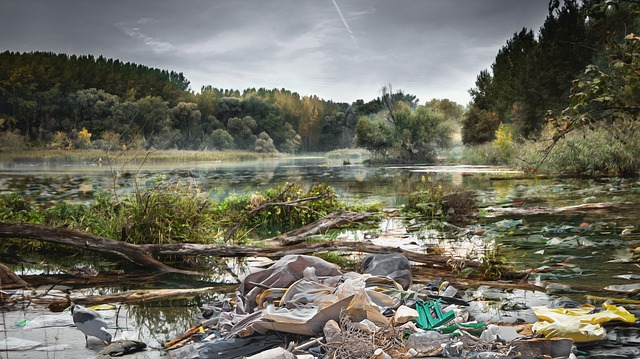By Joseph Wright, staff writer for Save The Water™ | June 4, 2014
Plastics Containing BPA and BPS Are a Problem
Basic materials and items people use on a daily basis are not always safe for human or environmental health. Of course, things like high arsenic levels are a common and easily understood concern. However, new toxins are being discovered every day. Toxins are, of course, dangerous, causing estrogenic activity, and are found even in children’s plastic cups and plates. [1] Perhaps the most well known toxin that is found in plastic products today is Bisphenol A (BPA). BPA is widely used in everything from plastic baby-bottles to cash register receipts. On top of this, BPA is concerning because of its weak estrogenic activity. [2] With the public outcry against BPA growing, many manufactures have abandoned it in favor of Bisphenol S (BPS), a BPA alternative. In 2006, Appleton, the largest manufacturer of thermal papers in North America switched from BPA to BPS. [3] Research has shown that BPS also interferes with the way cells respond to estrogen nearly mimicking BPA. [2] With BPA leaving our daily life and BPS entering, what can be done?
BPS Poses a Danger to Human Health.
There are two issues present here: (1) The immediate danger that BPS poses to human health; (2) The regulations around chemical compounds. Considering how the outcry against BPA is only resulting in the widespread use of the similarly toxic BPS, the problem lies beyond the compounds themselves. To be sure, the real issue is the system by which chemical substances or mixtures are allowed to be used in food, drugs, pesticides and, other products. Currently, the main measure in place to test the possible harm of chemical products is the 1976 Toxic Substances Control Act (TSCA). [4] The act was passed under the Ford Administration and served as a continuation of the Nixon administration’s environmental policy (Clean Air Act of 1972, Clean Water Act of 1972, Endangered Species Act of 1973, etc). [5] TSCA allows the Environmental Protection Agency (EPA) to test, evaluate and establish rules on the uses of chemical substances.
While the act was an impressive feat in 1976, it has yet to be updated and suffers from two major flaws: companies may use chemicals prior to testing the possible health risks and the EPA’s powers to remove a chemical already in the marketplace are limited. [6] Since 1976 over 22,000 chemicals have been added to the EPA’s inventory of chemicals used in production – only about 200 have been fully assessed. [7] When the law was passed there were 62,000 chemicals on the EPA’s list. [7] The time and resources needed to scientifically investigate a chemical and deem it an “unreasonable risk” to public health is massive, and since manufactures may use a chemical prior to testing, the law is highly ineffective.
Solution in Progress
What can be done to protect human and environmental health in light of this ineffective legislation? Legislative reform of the TSCA is the most effective change that can be made. There are already numerous groups and politicians working to make this change a reality. In 2013, the Chemical Safety Improvement Act was introduced with bipartisan support. This reform had 25 cosponsors including prominent voices such as Marco Rubio (FL) and Tomas Udall (NM). While this act does not fully modernize the TSCA, it does extend the powers of both the EPA and state/local governments to regulate chemical use. [8] The American Chemistry Council considers modernization of the TSCA not only beneficial for public health but acts in the best interest of chemistry as a discipline, making innovation a necessity. [9] Perhaps most revealing is that the EPA itself is currently in support of modernizing and improving the TSCA. [10]
What Can I Do?
Citizens can make their voices heard by supporting bills such as the Chemical Safety Improvement Act that look at public and environmental health first. Specifically, by placing pressure on elected officials, be it through social media, phone calls, letter writing, or email, voters can make their voices heard and be significant in making changes. If you have a business and want to add your name to the growing list of companies asking for TSCA reform there is a petition below from the American Sustainable Business Council Action Fund. Individuals can also sign the petition below from CREDO, calling for TSCA reform.
References
- He, Guochen, and Michael Denison. (January, 2014). “Detection of Estrogenic Activity in Plastic Cups and Plates.” Denison Laboratory. http://www.ceh.org/wp-content/uploads/2014/03/Denison-Laboratory-Analysis.pdf – accessed on May 30, 2014
- Grignard, E, S Lapenna, and S Bremer. “Weak Estrogenic Transcriptional Activities of Bisphenol A and Bisphenol S.” Toxicol in Vitro 26, no. 5 (August 2012): 727-31.
- Bienkowski, Brian. (January, 2013). “BPA Replacement Alters Hormones at Low Doses, Study Finds.” Environmental Health News. http://www.environmentalhealthnews.org/ehs/news/2013/bpa-alternative-alters-hormones – accessed on May 30, 2014.
- Environmental Protection Agency. (March, 2014). “Summary of the Toxic Substances Control Act.” https://www.epa.gov/laws-regulations/summary-toxic-substances-control-act – accessed on May 30, 2014.
- Vig, Norman & Michael E. Kraft. “Environmental Policy: New Directions for the Twenty-First Century”. CQ Press, 2012
- Environmental Defense Fund. (2014). “Nation’s Toxic Chemical Law Fails to Protect Us.” http://www.edf.org/health/chemicals/our-scientist-works-reform-chemicals-policy -accessed on May 30, 2014.
- National Resource Defense Council. (Year Unknown). “More than 80,000 chemicals available in the United States have never been fully tested for their toxic effects on our health and environment.” http://www.nrdc.org/health/toxics.asp – accessed on May 30, 2014.
- U.S Senate Committee on Environment & Public Works. (May, 2013). “Senators Lautenberg And Vitter Reach Groundbreaking Agreement To Reform Nation’s Chemical Laws.” http://www.epw.senate.gov/public/index.cfm?FuseAction=Minority.PressReleases&ContentRecord_id=ccf8cd45-e41f-28bd-0252-9984333f7335 – accessed on May 30, 2014.
- American Chemistry Council. (2014). “TSCA Modernization.” https://www.americanchemistry.com/Policy/Chemical-Safety/TSCA/ – accessed on May 30, 2014.
- Environmental Protection Agency. (December, 2012). “Essential Principles for Reform of Chemicals Management Legislation.” https://www.epa.gov/assessing-and-managing-chemicals-under-tsca/essential-principles-reform-chemicals-management-0




